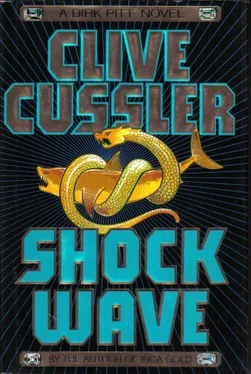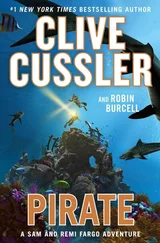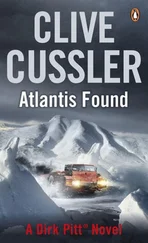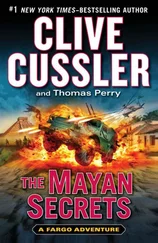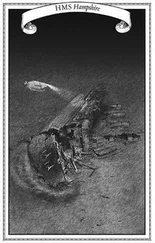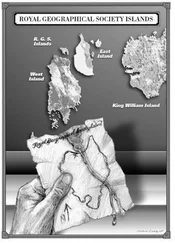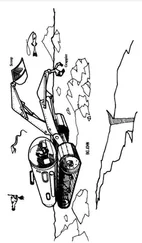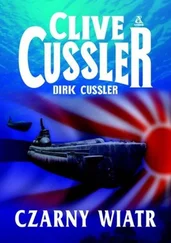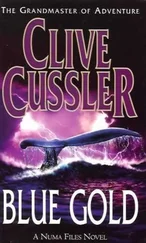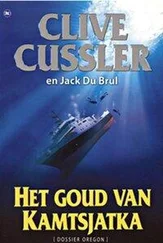Clive Cussler - Shock Wave
Здесь есть возможность читать онлайн «Clive Cussler - Shock Wave» весь текст электронной книги совершенно бесплатно (целиком полную версию без сокращений). В некоторых случаях можно слушать аудио, скачать через торрент в формате fb2 и присутствует краткое содержание. Год выпуска: 1996, ISBN: 1996, Издательство: Simon & Schuster, Жанр: Детектив, на английском языке. Описание произведения, (предисловие) а так же отзывы посетителей доступны на портале библиотеки ЛибКат.
- Название:Shock Wave
- Автор:
- Издательство:Simon & Schuster
- Жанр:
- Год:1996
- ISBN:978-0684802978
- Рейтинг книги:5 / 5. Голосов: 1
-
Избранное:Добавить в избранное
- Отзывы:
-
Ваша оценка:
- 100
- 1
- 2
- 3
- 4
- 5
Shock Wave: краткое содержание, описание и аннотация
Предлагаем к чтению аннотацию, описание, краткое содержание или предисловие (зависит от того, что написал сам автор книги «Shock Wave»). Если вы не нашли необходимую информацию о книге — напишите в комментариях, мы постараемся отыскать её.
Shock Wave — читать онлайн бесплатно полную книгу (весь текст) целиком
Ниже представлен текст книги, разбитый по страницам. Система сохранения места последней прочитанной страницы, позволяет с удобством читать онлайн бесплатно книгу «Shock Wave», без необходимости каждый раз заново искать на чём Вы остановились. Поставьте закладку, и сможете в любой момент перейти на страницу, на которой закончили чтение.
Интервал:
Закладка:
“He placed his own daughter in a life-threatening situation?” Sandecker muttered, incredulous. “I find that unthinkable. Are you sure the message was interpreted correctly?”
“There is no mistake,” said Gunn.
“That’s cold-blooded murder,” muttered Sandecker. “That means they were cast off on the edge of the Roaring Forties. Gale-force winds sweep those latitudes most of the year.”
“It gets worse,” said Gunn solemnly. “Dorsett left them drifting helplessly in the path of a typhoon.”
“How long ago?”
“They’ve been adrift over forty-eight hours.”
Sandecker shook his head. “If they survived intact, they’d be incredibly difficult to find.”
“More like impossible when you throw in the fact that neither our Navy nor the Aussies’ have any ships or aircraft available for a search.”
“Do you believe that?”
Gunn shook his head. “Not for a minute.”
“What are their chances of being spotted by a passing ship?” asked Sandecker.
“They’re nowhere near any shipping lanes. Except for the rare vessel transporting supplies to a subcontinent research station, the only other ships are occasional whalers. The sea between Australia and Antarctica is a virtual wasteland. Their odds of being picked up are slim.”
There was something tired, defeated about Rudi Gunn. If they were a football team with Sandecker as coach, Pitt as quarterback and Giordino as an offensive tackle, Gunn would be their man high in the booth, analyzing the plays and sending them down to the field. He was indispensable, always spirited; Sandecker was surprised to see him so depressed.
“I take it you don’t give them much chance for survival.”
“Three people on a small raft adrift, besieged by howling winds and towering seas. Should they miraculously survive the typhoon, then comes the onslaught of thirst and hunger. Dirk and Al have come back from the dead on more than one occasion in the past, but I fear that this time the forces of nature have declared war on them.”
“If I know Dirk,” Sandecker said irrefutably, “he’d spit right in the eye of the storm and stay alive if he has to paddle that raft all the way to San Francisco.” He shoved his hands deep in the pockets of his old peacoat. “Alert any NUMA research vessels within five thousand kilometers and send them into the area.”
“If you’ll forgive me for saying so, Admiral, it’s a case of too little, too late.”
“I’ll not stop there.” Sandecker’s eyes blazed with intent. “I’m going to demand that a massive search be launched, or by God I’ll make the Navy and the Air Force wish they never existed.”
Yaeger tracked down Sandecker at the admiral’s favorite restaurant, a little out-of-the-way ale and steak house below Washington, where he was having a somber dinner with Gunn. When the compact Motorola Iridium wireless receiver in his pocket beeped, Sandecker paused, washed down a bite of filet mignon with a glass of wine and answered the call. “This is Sandecker.”
“Hiram Yaeger, Admiral. Sorry to bother you.”
“No need for apologies, Hiram. I know you wouldn’t contact me outside the office if it wasn’t urgent.”
“Is it convenient for you to come to the data center?”
“Too important to tell me over the phone?”
“Yes, sir. Wireless communication has unwanted ears. Without sounding overdramatic, it is critical that I brief you in private.”
“Rudi Gunn and I will be there in half an hour.” Sandecker slipped the phone back into the pocket of his coat and resumed eating.
“Bad news?” asked Gunn.
“If I read between the lines correctly, Hiram has gathered new data on the acoustic plague. He wants to brief us at the data center.”
“I hope the news is good.”
“Not from the tone of his voice,” Sandecker said soberly. “I suspect he discovered something none of us wants to know.”
Yaeger was slouched in his chair, feet stretched out, contemplating the image on an oversized video display computer terminal when Sandecker and Gunn walked into his private office. He turned and greeted them without rising from his chair.
“What do you have for us?” Sandecker asked, not wasting words.
Yaeger straightened and nodded at the video screen. “I’ve arrived at a method for estimating convergence positions for the acoustic energy emanating from Dorsett’s mining operations.”
“Good work, Hiram,” said Gunn, pulling up a chair and staring at the screen. “Have you determined where the next convergence will be?”
Yaeger nodded. “I have, but first, let me explain the process.” He typed in a series of commands and then sat back. “The speed of sound through seawater varies with the temperatures of the sea and the hydrostatic pressure at different depths. The deeper you go and the heavier the column of water above, the faster sound travels. There are a hundred other variables I could go into, dealing with atmospheric conditions, seasonal differences, convergence-zone propagation access and the formation of sound caustics, but I’ll keep it simple and illustrate my findings.”
The image on the viewing screen displayed a chart of the Pacific Ocean, with four green lines, beginning at the locations of the Dorsett mines and intersecting at Seymour Island in the Antarctic. “I began by working backward to the source from the point where the acoustic plague struck. Tackling the hardest nut to crack, Seymour Island, because it actually sits around the tip of the Antarctic Peninsula in the Weddell Sea, which is part of the South Atlantic, I determined that deep ocean sound rays were reflected by the mountainous geology on the seafloor. This was kind of a fluke and didn’t fit the normal pattern. Having established a method, I calculated the occurrence of a more elementary event, the one that killed the crew of the Mentawai.”
“That was off Howland Island, almost dead center in the Pacific Ocean,” commented Sandecker.
“Far simpler to compute than the Seymour convergence,” said Yaeger as he typed in the data that altered the screen to show four blue lines beginning from Kunghit, Gladiator, Easter and the Komandorskie Islands and meeting off Howland Island. Then he added four additional lines in red. “The intersection of convergence zones that wiped out the Russian fishing fleet northeast of Hawaii,” he explained.
“So where do you fix the next convergence-zone inter section?” asked Gunn.
“If conditions are stable for the next three days, the latest death spot should be about here.”
The lines, this time in yellow, met nine hundred kilo meters south of Easter Island.
“Not much danger of it striking a passing ship in that part of the ocean,” mused Sandecker. “Just to be on the safe side, I’ll issue a warning for all ships to detour around the area.”
Gunn moved in closer to the screen. “What is your degree of error?”
“Plus or minus twelve kilometers,” answered Yaeger “And the circumference where death occurs?”
“We’re looking at a diameter anywhere from forty to ninety kilometers, depending on the energy of the sound rays after traveling great distances.”
“The numbers of sea creatures caught in such a large area must be enormous.”
“How far in advance can you predict a convergence zone intersection?” Sandecker queried.
“Ocean conditions are tricky to predict as it is,” replied Yaeger. “I can’t guarantee a reasonably accurate projection beyond thirty days into the future. After that; it becomes a crapshoot.”
“Have you calculated any other convergence sites beyond the next one?”
“Seventeen days from now.” Yaeger glanced at a large calendar with a picture of a lovely girl in a tight skirt sitting at a computer. “February twenty-second.”
Читать дальшеИнтервал:
Закладка:
Похожие книги на «Shock Wave»
Представляем Вашему вниманию похожие книги на «Shock Wave» списком для выбора. Мы отобрали схожую по названию и смыслу литературу в надежде предоставить читателям больше вариантов отыскать новые, интересные, ещё непрочитанные произведения.
Обсуждение, отзывы о книге «Shock Wave» и просто собственные мнения читателей. Оставьте ваши комментарии, напишите, что Вы думаете о произведении, его смысле или главных героях. Укажите что конкретно понравилось, а что нет, и почему Вы так считаете.
